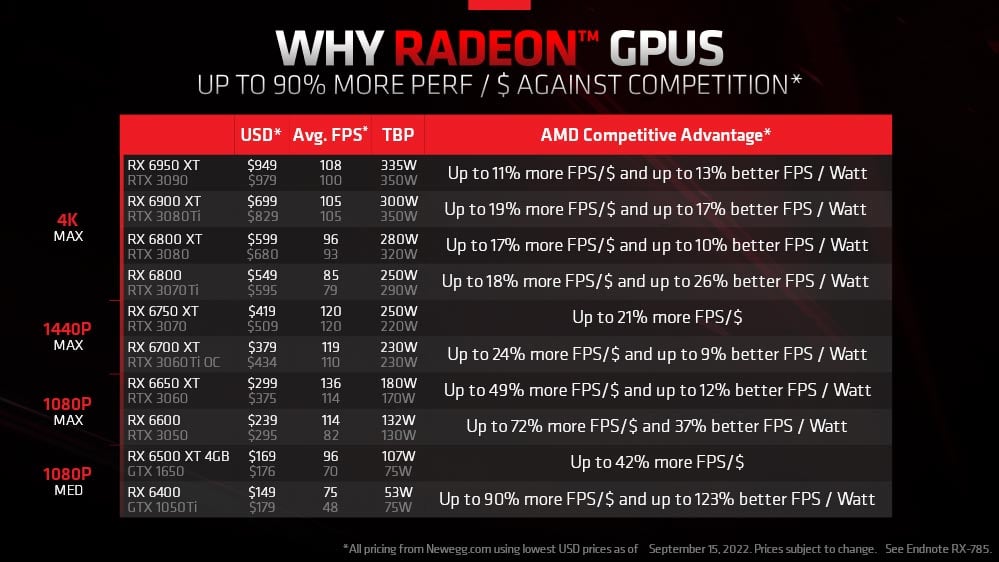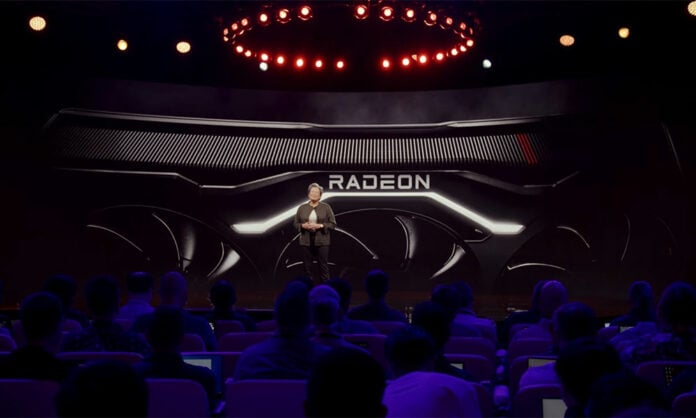On the eve of Nvidia’s GeForce RTX 4090 announcement, AMD is taking the time to reiterate its commitment to “energy-conscious design.”
In a blog post titled ‘Advancing Performance-Pet-Watt to Benefit Gamers,’ senior vice president and product technology architect Sam Naffziger takes us on a trip down memory lane, pointing to significant efficiency gains across the last three generations of AMD Radeon graphics cards.
Most recently, Radeon RX 6000 Series GPUs are cited as having delivered a 65 per cent increase in performance-per-watt over RX 5000 Series cards built on the same 7nm process. Firing a shot across the bow of upcoming competition, Naffziger points out “graphics card power has quickly pushed up to and beyond 400 watts.” RTX 4090, as you’ve no doubt heard, is rumoured to ship with a lofty 450W TDP.

“Power consumption is rapidly becoming a major concern for gamers, as not only are energy prices skyrocketing worldwide, but higher power means users must contend with ever-increasing heat dissipation and louder systems caused by the need for larger cooling solutions,” adds the AMD corporate fellow.
What’s of interest to the enthusiast awaiting next-gen hardware is that Naffziger reckons AMD is on track to deliver on its promise of a greater than 50 per cent increase in performance per watt with 5nm RDNA 3.
Promising “top-of-the-line gaming performance” in “cool, quiet, and energy-conscious designs,” AMD recalls building its CPU and GPU architectures from the ground-up, and a lot of those early bets have begun to pay off. RDNA 3’s efficiency is made possible, says AMD, through refinement of the adaptive power management featured in RDNA 2, as well as a new generation of AMD Infinity Cache.
Efficiency gains typically lend themselves to higher frequencies, so just how quick might a next-gen AMD GPU operate? According to the latest Twitter leaks from @9550pro, we could be looking at GPUs hitting almost 4GHz. A near-1,000MHz uptick over current-gen Radeons is not to to be scoffed at, but take such rumours with a pinch of salt at this early stage.

